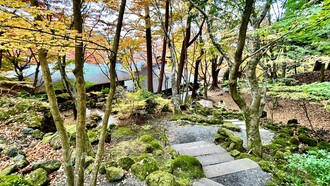Barangaroo is one of the most ambitious urban renewal projects in Australian history. Once complete in 2024, it will dramatically transform Sydney’s harbour foreshore. Designed by Johnson Pilton Walker, Barangaroo is often lauded as the most important reinvention of Sydney’s historic centre for decades.
Barangaroo is made up of three precincts: Barangaroo South, a mix of office and residential; Barangaroo Central, a mixed-use/recreational space with large areas for programmed festivals and entertainment; and Barangaroo Reserve, a public park and cultural centre.
The site is located on the former Stevedoring wharves that provided the economic lifeline for the city and country for over 150 years. Shipyards were built in the 1850s, and the area became a significant transportation hub, but technological advances and a shift in economic demands at the turn of the 21st century rendered the 22-hectare property economically and functionally obsolete. The ultimate demise was when shipping container operations were relocated to Port Botany in the 1980s.
Ownership of the port shifted from individually owned private wharves to the Sydney Harbour Trust during the bubonic plague in 1900. The intent to develop stevedoring wharves into a new urban precinct was initially introduced in 2003 by the NSW Government. In 2006, Patrick Corporation, who leased the site from the New South Wales Government, moved their stevedoring operations to Port Botany. It was then time to look at the future of the site for more productive and profitable land uses, posing a unique opportunity for urban renewal.
Urbanisation of capital is a contentious topic, as it is often associated with the polarisation between classes where profit-seeking developers get richer at the expense of the lower-class public. However, from the very outset, the NSW government demonstrated that their motivation extends far beyond economic interest. Bob Carr, the Premier at the time, made his intentions clear by stipulating that there is to be at least 50% of the site as open public space, helping to allay public fears. In 2015, the first portions of Barangaroo were returned to the public domain, marking the first time in more than a century that the public had access to this part of the city.
This AUD $6 billion dollar plus development marks the transformation of Sydney’s harbour docklands into a sprawling public, residential and commercial precinct. Barangaroo offers a wide range of services and amenities to the public. Barangaroo will support a projected target of 23,000 permanent jobs, 3,500 residents, and contribute more than AUD $2 billion a year to the NSW economy. The precinct functions as a global attractor of business and tourism and aims to cement Sydney’s position as a globally significant financial hub in the Asia Pacific. This new agglomeration-centric precinct will be a huge win for the NSW economy, albeit to the expense of other states, as there are only a limited number of financial hubs needed to service the region. The site is owned by the NSW Government and managed by Infrastructure NSW and all buildings are leased for 99 years. All public domain areas are managed by The Barangaroo Delivery Authority.
Lendlease were chosen to develop Barangaroo South, which comprises three International Towers. The Authority manages the public spaces for the benefit of the people of New South Wales. The Authority and Lendlease signed a Project Development Agreement that outlined the financial details. These involve substantial fixed payments to the government over at least ten years. Other financial elements include the opportunity to share in the project’s financial success through additional value payments. Chinese-backed developer Aqualand is responsible for Central Barangaroo which Includes Barangaroo Metro station, providing access to the development’s public, residential, commercial and entertainment areas. Crown Resorts have created a behemoth of a 6-star hotel on the harbour’s edge, but not without controversy. For James Packer, money and power has enabled him to bypass planning controls in creating the tallest building in Sydney, for a cool AUD $2.2 billion dollars.
Ina similar light, planning modifications have seen an increase in floor space from 330,000m2 in the 2005 design brief, to 681,008m2 – more than double. This has not just hurt the public by eating away at open space, but other property owners in the CBD whose developments are swamped by a more prominent Barangaroo. The council, who lost control of the development, has since accused the state government of its conflict of interest by being both the approval authority and the owner of the site.
The story of Barangaroo, although successful in many regards, unfortunately exposes significant flaws in the planning system and is what Architect Philip Thalis describes as “a demonstration of everything wrong in contemporary Australian city-making."















